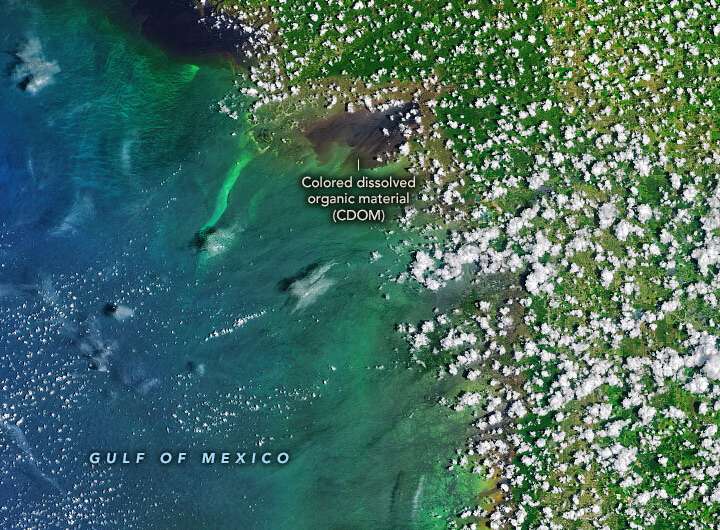New study links red tides and dead zones off west coast of Florida

A new study found that when red tides began in early summer and continued into the fall, low oxygen areas—or dead zones— were more likely to also occur. This study by scientists at the University of Miami Rosenstiel School of Marine and Atmospheric Science, and NOAA collaborators is the first study to link low oxygen—or hypoxia—to red tides across the west coast of Florida and offers new information to better understand the conditions favorable for combined events as they are expected to increase as Earth continues to warm.
Red tides are becoming a near annual occurrence off the west coast of Florida, which are caused by massive blooms of the algae Karenia brevis fueled in part by excess nutrients in the ocean. These algae blooms turn the ocean surface red and produce toxins that are harmful to marine mammals, sharks, seabirds and humans causing a range of issues from respiratory irritation, localized fish kills to large-scale massive mortalities to marine life. Hypoxic areas are typically referred to as ‘dead zones’.
“These events are so disruptive they are being incorporated in population assessments of some grouper species for use in fishery management decisions. During the 2005 red tide that also had hypoxia, it was estimated that about 30% of the red grouper population was killed,” said Brendan Turley, an assistant scientist at the UM Rosenstiel School and NOAA’s Cooperative Institute of Marine and Atmospheric Studies. “There are also concerns that the conditions favorable for combined red tide and hypoxia events will increase with climate change projections into the future.”
The study, conducted as part of NOAA’s Gulf of Mexico Integrated Ecosystem Assessment Program, examined nearly 20 years of oceanographic data that included temperature, salinity, and dissolved oxygen from the surface to the seafloor across the West Florida Shelf to determine the frequency of hypoxia and association with known red tides. The researchers found that hypoxia was present in five of the 16 years examined, three of which occurred concurrently with extreme red tides in 2005, 2014, and 2018. There is an ongoing effort to collaborate with commercial fishermen in Southwest Florida to monitor for red tide blooms and formation of hypoxia, which incorporates data collected during various NOAA surveys conducted in the region annually.
The study, titled “Relationships between blooms of Karenia brevis and hypoxia across the West Florida Shelf,” will appear in the May issue of the journal Harmful Algae, which is currently online. The study’s authors include: Brendan Turley from the UM NOAA Cooperative Institute for Marine and Atmospheric Studies; Mandy Karnauskas, Matthew Campbell, David Hanisko from NOAA’s Southeast Fisheries Science Center and Christopher Kelble from NOAA’s Atlantic Oceanographic and Meteorological Laboratory.
Red tide still killing dolphins off the coast of Florida
Brendan D Turley et al, Relationships between blooms of Karenia brevis and hypoxia across the West Florida Shelf, Harmful Algae (2022). DOI: 10.1016/j.hal.2022.102223
Citation:
New study links red tides and dead zones off west coast of Florida (2022, April 26)
retrieved 26 April 2022
from https://phys.org/news/2022-04-links-red-tides-dead-zones.html
This document is subject to copyright. Apart from any fair dealing for the purpose of private study or research, no
part may be reproduced without the written permission. The content is provided for information purposes only.
For all the latest Science News Click Here
For the latest news and updates, follow us on Google News.

